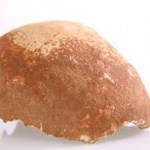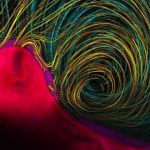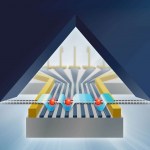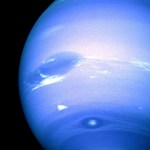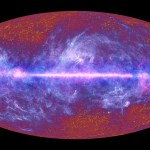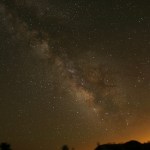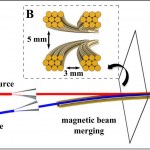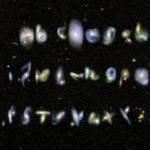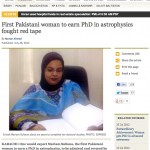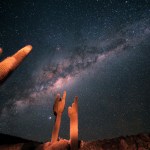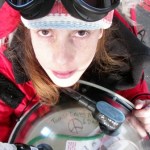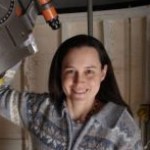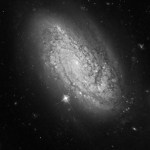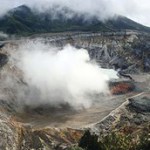astrophysics
Manot Cave cranium
With a skull and Keats, there was little choice but to write about the new online items in rhyme. So with apologies to Shakespeare, Keats and the scientists, as well as the people at SpaceIL, here are today's grab bag of poems. As usual, follow the links.
On a Lone Cranium
Alas poor Yorick – We can only know
Where you lived all those eons ago
Walking, did you take those others in stride;
Human, yet strange, as they strode alongside?
Did your children wander forth,
Searching for a greener North?
Can your skull, a bit of bone,
Tell us where our seeds…
Because I must trim browser tabs, here is a current short list of things that might be useful:
Threebody - online implementation of the open source IAS15 integrator - a 15th order high precision N-body integrator -
ASCL - Astrophysics Source Code Library - Open Source Code
Visible Spectra of the Elements - Except Astatine :-(
Astronomy Simulators - small web simulators for elementary concepts.
Some quite nifty.
From University of Nebraska.
All the Kepler 2 Campaign 0 data - with some tools to play with it
Today’s new articles involve flow: the flow of positrons through the Universe and the flow of particles around the tiny cilia of corals. They involve beauty and mystery, as well. The particle flow, imaged in brilliant colors, won first place in the photography category of the 2013 Science/National Science Foundation International Science & Engineering Visualization Challenge.
And positrons – the anti-matter opposites of electrons – have been found in large numbers flowing in near-Earth space. Weizmann Institute research points to an answer to one riddle: Why did a satellite…
So, now you’re at university, and you’re thinking about heading for grad school …
A seasonal revisit of some old rumblings*
*NB: this discussion should not be construed to be anything but hypothetical ramblings, they do not reflect in any way the official position of any academic institution, department or graduate program, especially not the one I am part of!
So You Want To Be An Astrophysicist? Part 1.5: thinking about grad school
Posted by Steinn Sigurðsson on January 16, 2012
(2)
Share on email More »
So, now you’re at university, and you’re thinking about heading for grad school …
More…
Of the four new articles online on our website, three happen, purely by accident, to be on physics research. The three are very different, and yet each is an illustration of the ways that basic physics research changes our world – in small and large, practical and enlightening ways. And each is situated at a different intersection between the technological and the theoretical – a technological breakthrough that resulted from a successful attempt to provide proof for a theoretical construct, new inventions based on elementary physical principles of light, and a theory substantiated through a…
Have you complained about the weather recently? On the gas giants at the edges of our solar system, Uranus and Neptune, hurricane-like storm systems as big around as Earth blow 1000 km/h winds for years on end.
Voyager II image of Neptune, showing storm features. Image: NASA
But wait…What exactly constitutes weather on a giant gas planet? Here on planet Earth, there is a clearly delineated gas layer enveloping the solid/liquid layer we call home. Our weather arises from our planet’s rotation and the solar heating of its surfaces. On a rapidly-rotating gas planet (a day on Neptune is 16…
What are Origami Nanosat Telescopes? How about Kinetic Inductance Detectors?
More importantly, what should we do with them?
NASA's Astrophysics is doing a Roadmap exercise, with the stated intent to look at science goals, technology and capabilities up to 30 years out!
White papers were solicited a few weeks ago, and about 100 were received and are archived online, about 3/4 on science and 1/4 on technology.
There was originally supposed to be a workshop for presentation of selected white papers, but in the world of sequestration that was not feasible, so instead there was a two day online…
"Scientific discovery and scientific knowledge have been achieved only by those who have gone in pursuit of it without any practical purpose whatsoever in view." -Max Planck
Tomorrow morning, at 8 AM my time, the press conference that cosmologists have spent the past decade waiting for will finally happen, and the Planck satellite -- the most powerful satellite ever to measure the leftover radiation from the Big Bang -- will finally unveil its results about the origin and composition of the Universe.
Image credit: ESA / LFI and HFI Consortia.
They've figured out how to subtract the…
"The vastness of the heavens stretches my imagination. It does not do harm to the mystery to know a little about it. For far more marvelous is the truth than any artists of the past imagined it." -Richard Feynman
What did you think about, wonder about, and dream about the first time you saw the true magnificence of the night sky? Did you wonder about planets orbiting each of the thousands of points of light you saw? Did you think about the possibilities of rocky worlds with liquid water, of life, and even of intelligent aliens? Or did you perhaps think on even larger scales, about what stars…
Today’s post is about some cool chemistry – very cool. About 0.01°Kelvin, as a matter of fact (that is, one hundredth of a degree above absolute zero). Physics experiments conducted at such temperatures are already old hat, but chemistry is another story, altogether. Scientists have been attempting to produce chemical reactions at ultra-low temperatures for at least 50 years; a Weizmann research team has finally achieved that goal.
Why try to get reactions to take place in these conditions, which are wholly unfavorable to the usual lab-type chemistry? The answer is that when temperatures drop…
"When I was having that alphabet soup, I never thought that it would pay off." -Vanna White
Ever want an A-to-Z illustrated alphabet of astrophysics? Turns out that -- other than writing your own via Galaxy Zoo -- it doesn't yet exist. So I thought it would be delightful to make one for you... right now!
Image credit: Flickr user Image Editor / 11304375@N07.
A is for Aurora, polar lights fast and slow,
the Sun's hot electrons make the atmosphere glow.
Image credit: Andrew Hamilton of JILA / Colorado, http://jila.colorado.edu/~ajsh/insidebh/schw.html.
B is for Black hole, a star'…
“One life is all we have and we live it as we believe in living it. But to sacrifice what you are and to live without belief, that is a fate more terrible than dying.” -Joan of Arc
Regardless of what intrinsic differences any person or group of people have from another, everyone deserves to be treated as an individual, afforded the same opportunities to pursue their passions, goals and dreams, and evaluated on the merits of their performance. Although this is not yet the way the world works, I am confident that many strides are consistently being made in the right direction, and I was…
"You don't use science to show that you're right, you use science to become right." -Randall of xkcd
In January of 2008, I began writing this blog, Starts With A Bang, both for myself and for all of you, because we all have something in common.
Image credit: © Stéphane Guisard, "Los Cielos de Chile", via astrosurf.com.
The same planet, the same heavens, the same laws of nature and the same Universe are something that we all have in common. And all of us, no matter how intrinsically smart, talented, or brilliant our instincts are, come into this world knowing absolutely…
Not many Israelis make it all the way to the South Pole. (In fact, very few people go there, at all. Not only is it really, really cold, it is extremely difficult and expensive to transport people, gear and necessities to this remote and inhospitable corner of the earth.) So when we learned that Dr. Hagar Landsman, who recently joined the Weizmann Institute’s Physics Faculty, has a part-time gig at the IceCube neutrino detector array, we simply had to write about her. Landsman’s specialty is particle detectors, and IceCube has 5,000 of them buried under several kilometers of ice. In her brief…
By Dr. Gerry Harp, Senior Astrophysicist, Center for SETI Research, SETI Institute, and Gail Jacobs
Trained as a quantum mechanic, Dr. Gerry Harp was deeply interested in possibilities for using the multiple telescopes of the Allen Telescope Array to generate steerable "beams" on the sky -- beams that could be far smaller than any single antenna could produce. Such beams don't emit anything, but work in reverse by capturing only energy that comes from the sky in a certain direction. Gerry joined the SETI Institute in 2000, practically at the telescope's inception and uses the telescope for…
The service tower attached to the iconic floating egg atop the Institute's Koffler accelerator (the "spaceship" in the photo, left) has recently been graced with a charming, shiny silver skullcap - an observatory dome. Formally known as the Martin Kraar Observatory, it houses two telescopes, and it figured in two of our recent press items. We spoke with observatory director Ilan Manulis of the Davidson Institute of Science Education:
WSW: Tell us about the telescopes.
IM: The larger one is a 41 cm. (16 in.) telescope. Due to special optical properties, it has the power of a much longer…
Like the stars she studies, Nifty Fifty Speaker and astrophysicist Maura McLaughlin has reached some lofty heights in her young career as she works to shed further light on the Universe and the physical laws governing it, including Einstein's theory of relativity. Maura is an assistant astrophysics professor at West Virginia University where her work mainly involves researching neutron stars - burned out remnants of stars known as pulsars that are formed in supernova explosions following the collapse of massive evolved stars.
"These exotic objects are more massive than the Sun, and can spin…
NASA has some official word on what is going on in astrophysics in general and with LISA in particular.
LISA and IXO ended.
Teams supported through Oct '11, if budget is not cut more.
New concept studies.
LISA and Changes in the Cosmic Vision Programme (pdf)
LISA and Changes in the Cosmic Vision Programme
"Based on discussions with the European Space Agency (ESA) at the recent ESA- NASA bilateral meeting, we provide the following information concerning LISA. Readers are advised to refer to any ESA postings - when available - for details and clarifications regarding the Cosmic Vision…
Dark matter - that invisible stuff that is supposed to make up some 20% of the Universe - was thought up to explain a puzzling observation. The amount of mass we can see through our telescopes is not enough to keep galaxies from spinning apart. The existence of great quantities of hidden mass would provide the gravitational pull needed to form those galaxies and enable them to rotate in the way that they do.
But not everyone is willing to buy the idea that the Universe is cloaked in "invisible cloth." An alternate theory, first put forward by Weizmann Institute astrophysicist Prof. Moti…
By Dr. Ignacio Mosqueira, an astrophysicist at the Carl Sagan Center for the Study of Life in the Universe, SETI Institute, and Gail Jacobs
Ignacio Mosqueira works with Paul Estrada to piece together the way in which giant planets - such as Jupiter and Saturn -- and their moons and rings formed. Ignacio notes that making moons is similar to forming planets. Understanding moons may have something to tell us about the possible habitats for life, since large moons could, in principle, have both the liquid water and atmosphere necessary for the kind of diverse biology we see on planet Earth.…
